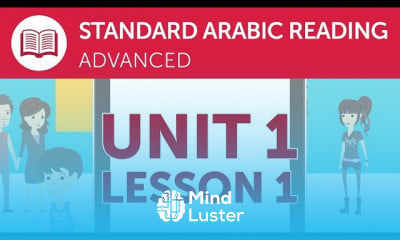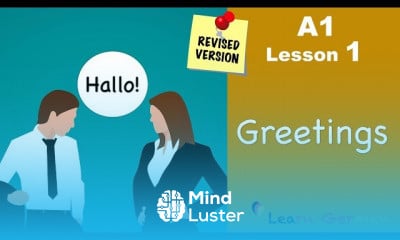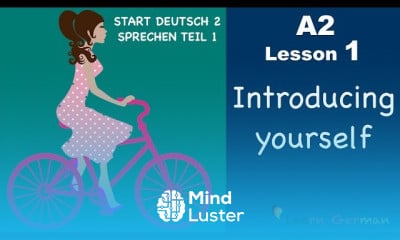English Conversation Listening Practice English Practice Listening to Naturally
Share your inquiries now with community members
Click Here
Sign up Now
Lessons List | 33
Lesson
Comments
Related Courses in Languages
Course Description
7 tips for teaching English to beginners
Keep instructions clear and simple. ...
Let them listen first. ...
Drill, repeat, drill, repeat, drill… ...
Establish classroom language early on. ...
Avoid metalanguage. ...
Don't forget that your students are fluent in their own language(s) ...
Prepare well, prepare a lot, keep them talking.
Teaching beginners can be a daunting prospect, especially when it’s a monolingual group and you know nothing of their language, or it’s a multilingual group and the only common language is the English you’ve been tasked with teaching them. Nevertheless, not only is it possible to teach beginners only through English, but it can also be one of the most rewarding levels to teach. To help you succeed in setting your learners firmly on the path to increasing proficiency, here are seven tips for teaching English to beginners.
1. Keep instructions clear and simple
It can be tempting when addressing a class of students, especially ones that you’ve only just met, to explain activities in your politest language. After all, no one likes to be rude. However, a student who has only a few words of English, if any at all, won’t appreciate the courtesy of (or even understand), “OK, so now what I’d like you all to do, if you don’t mind, is just to stand up for a moment and come to the front of the class. Oh, and please bring your book with you. Could we all just do that?”
Instead, make instructions crystal clear by using as few words as necessary and by gesturing whenever possible, and break down series of instructions into smaller units. If you want to be polite, “please” and “thank you” will do. “Everybody – take your book, please. Stand up. Now, come here, please. Thank you.”
2. Let them listen first
More than likely, your students will want to start practising speaking pretty much from the get-go. However, it takes a while for one’s ear to acclimatise to the sounds of a new language, and not everyone will be so keen; don’t pressure students into speaking before they’ve had lots of opportunity to listen to you using it (which doesn’t mean you should just be rambling on at the front of the classroom – with beginners more so than with other levels, you really have to consider what you say and grade your language accordingly).
3. Drill, repeat, drill, repeat, drill…
Beginners need lots of repetition and drilling, especially as they get to grips with the sounds of their new language. It might seem boring to go over the same sentences again and again, but it is necessary. When practising a new sentence, try back-drilling, breaking the sentence down into manageable units and then building it back up, working backwards from the end of the sentence to the beginning; this helps to ensure that your intonation is natural and that you get elements of connected speech right. For example, break down “Would you like a cup of tea?” as follows:
tea > cup of tea > like a > like a cup of tea > Would you > Would you like a cup of tea?
4. Establish classroom language early on
Classroom language – Can you speak more slowly? What do we have to do? I don’t understand. What does… mean? How do you say… in English? – is usually associated with teaching children, but it really helps with adult beginners as well. No matter how friendly and relaxed you make your classroom atmosphere, learning a new language can still be daunting, especially when you feel you’re not completely following what’s going on, or that you might be called on to say something that you don’t feel ready to say. It’s much better to equip students early on with classroom language that will help them navigate the lesson smoothly.
5. Avoid metalanguage
There’s no point in students knowing the terms past simple, irregular verb or adverb of frequency if they can’t use the actual structures or words they refer to. Don’t tell them how to say something: show them. Give as much context as you can (visual prompts work well). Furthermore, make sure you check they have understood by asking questions that test their comprehension – never ask “Do you understand?” as a) many people are reluctant to let on that they haven’t understood and will pretend instead that they have; and b) a student may think they have understood when in fact they haven’t.
6. Don’t forget that your students are fluent in their own language(s)
This may seem a trivial point, but it’s all too easy when listening to somebody speaking broken English to forget that behind the errors and the mispronunciation is a person with cogent thoughts, no doubt articulate in their first language, attempting to communicate his or her opinions or ideas.
As teachers, we not only have to be patient and proactive listeners, alert to the reasons why certain errors are being made while filling in the gaps in less-than-perfect communication, we also have to steer clear of adopting the Me-Tarzan-You-Jane approach to teaching, bastardizing the very language we are aiming to teach. Rather than degrading our language we have to grade it carefully so as to keep it comprehensible while maintaining its naturalness, rhythm and spirit, ensuring all the while that, as far as possible, we actually converse with our students and listen to what they have to say. After all, even from the very first lessons, from the ‘A’ in the alphabet and the ‘am’ of ‘to be’, communication is the goal.
What we should always avoid is this:
7. Prepare well, prepare a lot, keep them talking
Even though teaching beginners entails progressing slowly and recycling and repeating language many times, that doesn’t mean recycling the same activities, especially not during one lesson. Ensure you have a range of activities to use, and don’t go into class without having first carefully thought through how you are going to introduce new language, how you will check that the students have understood it, how you will practise it, and how you will deal with potential misunderstandings. The possibility for confusion at this level is much greater than at higher levels, and sometimes even harder to disentangle.
Also bear in mind that, unlike with higher levels, you can’t rely on conversations developing simply because the students don’t yet have the linguistic resources to engage in anything other than simple exchanges (though in time they will). This means that the onus will largely be on you to keep them talking.
Finally, enjoy this level. Although in many ways the hardest level to teach, it can also be one of the most satisfying. Seeing your learners go from knowing nothing to knowing a few words to knowing a few sentences and structures to being able to hold rudimentary conversations can be incredibly rewarding, and if they enjoy their initial exposure to the language, and feel confident and inspired to continue, then you will have helped pave the way to their further success.
Trends
Graphic design tools for beginners
Logo Design
Accounting Finance course
Best zoology books
Figma globe icon design
SQL for accountants and finance managers
Web Design Using HTML CSS
Graphic Design Basics
Web design basics
Digital Logic Families in Digital Electronics
Education Biotechnology
Figma Signing Up and Signing In
Master graphic design techniques
General Embryology 2
Website banner design in Photoshop cc
Python Logging
PHP MySql programming
Figma fast design techniques
Essential english phrasal verbs
Trigonometry Essentials
Recent
Bioinformatics basics
Bioinformatics databases
Vitamin A to Z tablets
Best zoology books
Best cream for piles pain
Laser surgery for piles
Best cream for piles
Anal fissure treatment
Best antibiotics for diseases
Antibodies structure
Macrophage structure
Drosophila genetics
Diagnostic tests
Bioinformatics
Genetics
Gene therapy
Kidney structure
DNA replication and types
Bacterial cell structure
Parasite structure


















